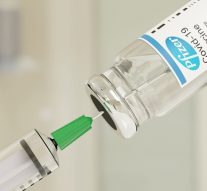
The economics of anti covid-19 vaccination within the EU
Economy 9 January 2021The European Union has started a mass vaccination against the coronavirus in Member States, which have so far recorded more than 335 thousand deaths related to Covid-19. The co-ordination is a “living moment of unity“, advertising Ursula von der Layen to the European Commission, as some member states have started vaccinating the day before. In the 27 EU member states, more than 14 million people have been infected with the coronavirus. In most countries, restrictions on movement and work are in place during the Christmas and New Year holidays in an attempt to prevent the spread of the virus.
The EU is already offering vaccine support to non-EU Balkan countries, and in December approved a sum of 70 million euros to help them cover the costs of vaccination, reports Agence France-Presse. The letter sent to Brussels asks for similar assistance to be provided to the countries participating in the Eastern Partnership program – Armenia, Azerbaijan, Belarus, Georgia, Moldova and Ukraine. The foreign ministers said they thought the EU should go beyond current initiatives and provide similar attention and support to the Union’s other neighbors, the EU’s Eastern Partnership countries.
A spokesman for the Commission confirmed that the body had received the letter and stated that Brussels was already in talks with partner countries but did not give other details. The call came at a time when European authorities are facing fierce criticism for the slow implementation of the vaccination process in member states. The commission talks about insufficient vaccine production capacity. The EU has so far approved one coronavirus vaccine, Pfizer / Biontec, and another vaccine, the American Moderna, is expected to be approved soon, for which the European Medicines Agency gave the green light today.
Since the beginning of immunization in the EU at the end of December last year, at least 1.1 million people have been vaccinated, which is only 0.2 percent of the population of the European Union, as far as the Vaiser / BionTech company has received the vaccine so far. Yesterday, the European Union approved the use of the vaccine of the American company Moderna. Within the EU, Germany vaccinated the most people – 367,331, followed by Italy (272,307), Poland (140,226), Spain (139,339) and Denmark (63,312). According to available data, more than 5.3 million people have been vaccinated in the United States so far, which is only 1.6 percent of the total population, China has vaccinated at least 4.5 million people or only 0.3 percent of the population, while Israel leads where About one and a half million citizens or 17.2 percent of the total population received the vaccine.
All those countries started the process of immunization before the European Union, according to the agency. Compared to the population, Denmark vaccinated the most people among EU member states -1.1 percent of the population, followed by Italy (0.45%), Germany (0.44%) and Slovenia (0.43%). The leading countries in terms of the number of vaccinated in the world are Israel with 17.2 percent of the total population and the United Arab Emirates with 8.4 percent, but reminds AFP, the vaccinations started in mid-December last year. Most EU member states started immunization in the last days of last year, between December 26 and 29, and the Netherlands joined them only on January 6.
How much does it cost?
The Guardian reports that comparing that list with U.S. calculations by Bernstein Research, an analysis and investment firm, it appears that the 27-nation union has a 24 percent discount on the Pfizer vaccine, paying $14.76 per dose relative to $19.50 in the United States. Some of the difference may reflect that the EU subsidized that vaccine’s development and the cost of shipping the European-made shots across the Atlantic. According to the Belgian document, the bloc will pay 45 percent less than the United States for the AstraZeneca-Oxford vaccine currently under development. But it will pay 20 percent more than the United States for the Moderna vaccine, which on Friday was authorized for emergency U.S. use. Both of those vaccines were funded partly by the U.S. government as part of Operation Warp Speed, an effort to expedite their development. The AstraZeneca-Oxford team received $1.2 billion, and Moderna got $4.1 billion.
The EU needs to immunize more than 60 % of its total population (which is some of 350 million people). This attempt is outrageously expensive, but the crisis and economic cost benefit clearly demonstrates the economic justification of the vaccination process within the supranational level.


